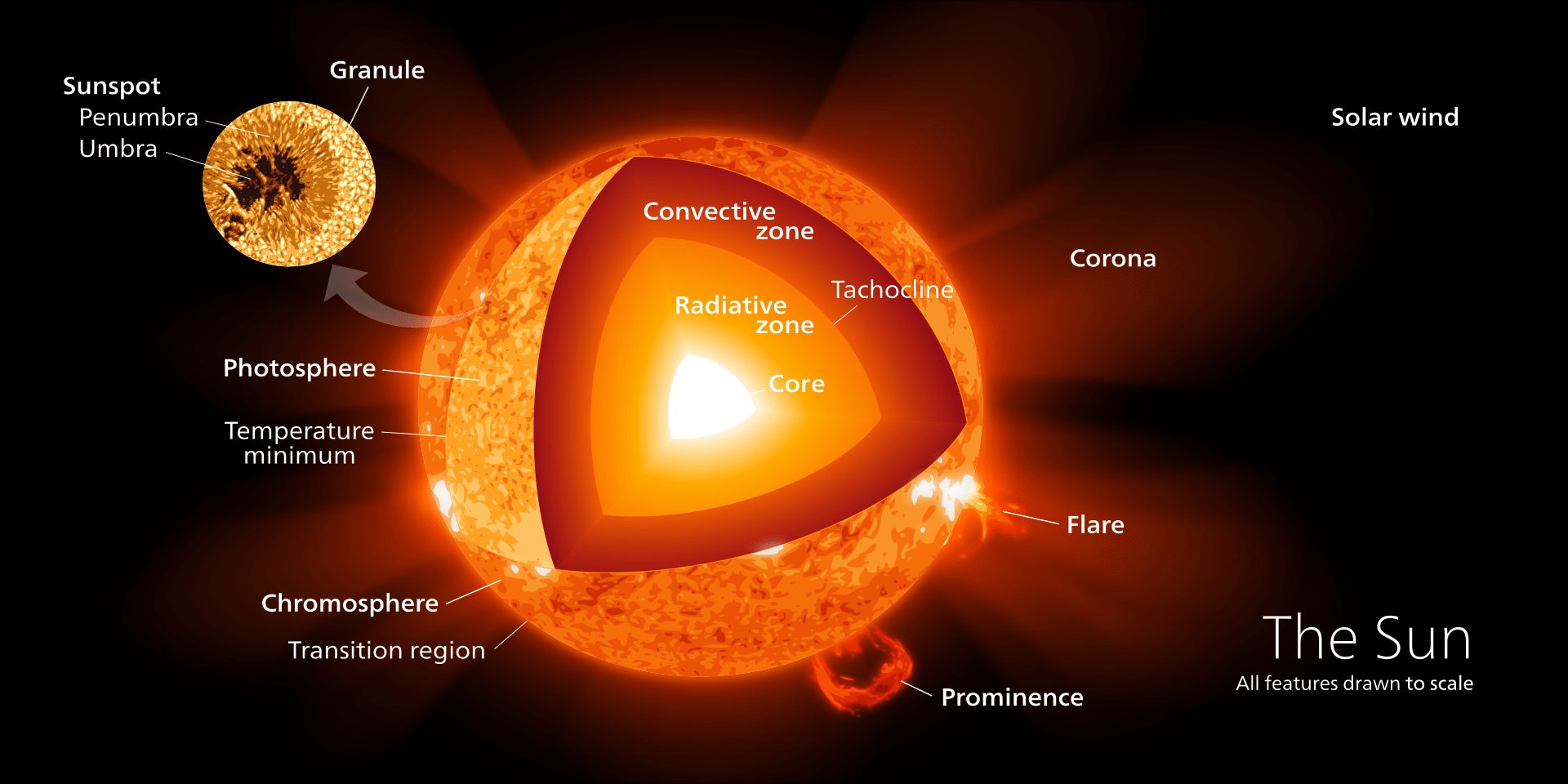Kodaikanal Solar Observatory | 06 Apr 2024
For Prelims: India’s Aditya-L1 Mission, Solar Observatory, Sunspots and Solar Flares, KoSO (Kodaikanal Solar Observatory).
For Mains: Solar Observatory, Achievements of Indians in Science & technology.
Why in News?
Recently, Kodaikanal Solar Observatory celebrated its 125th birth anniversary. Over the years, it has played a crucial role in advancing our understanding of solar activity and its impact on Earth's climate and space weather.
What is a Solar Observatory?
- About: A solar observatory is a facility or institution dedicated to observing and studying the Sun.
- These observatories use specialised telescopes and instruments to observe various phenomena on the Sun's surface, in its atmosphere, and in the surrounding space.
- Need: The Sun serves as the main source of energy for life on Earth, and alterations in its surface or surrounding areas have the potential to greatly impact our Earth’s atmosphere.
- Intense solar storms and Solar flares pose significant risks to satellite operations, power grids, and navigation systems reliant on space-based technology.
- Through solar observatories, scientists can monitor these events and predict major events that can have an impact on earth’s atmosphere.
What is the Kodaikanal Solar Observatory?
- About: The Kodaikanal Solar Observatory is a solar observatory owned and operated by the Indian Institute of Astrophysics. It was established in 1899.
- It is on the southern tip of the Palani Hills.
- The Evershed effect (apparent radial flow of gas observed in the penumbra (outer region) of sunspots on the Sun )was first detected at this observatory in January 1909.
- Cause of Establishment: The establishment of the Kodaikanal Solar Observatory (KoSO) in India, was motivated by the need to understand the link between solar activity and monsoons.
- The devastating Great Drought of 1875-1877 in India highlighted the potential link between solar activity and seasonal rainfall patterns.
- India, along with China, Egypt, Morocco, Ethiopia, southern Africa, Brazil, Columbia and Venezuela, suffered concurrent multi-year droughts during 1876-1878, later named the Great Drought, and an associated global famine that killed nearly 50 million.
- The Famine Commission recommended establishing a solar observatory for systematic solar observations to understand this connection.
- Charles Michie Smith, a physicist, was entrusted with finding a suitable location.
- Kodaikanal in Tamil Nadu was chosen for its clear skies, low humidity, and minimal fog.
- The devastating Great Drought of 1875-1877 in India highlighted the potential link between solar activity and seasonal rainfall patterns.
- Madras Observatory (Chennai, 1792): In 1792, the British East India Company established the Madras Observatory, a first of its kind in this part of the world.
- Here, astronomical observations of the Sun, the Moon, bright stars and planets recorded during 1812-1825 were preserved in two large data volumes.
- It was merged with the KoSO following the reorganisation of all Indian observatories in April 1899.
What are the Other Major Space Observatories Established in India?
- Indian Astronomical Observatory (IAO), Hanle: It is situated in Hanle Ladakh and one of the country's premier astronomical facilities.
- It is operated by the Indian Institute of Astrophysics and plays a vital role in advancing India's contributions to the field of astronomy and astrophysics.
- Mt. Abu Infrared Observatory (MIO): It is situated at the top of Mount Abu (at Gurushikhar) in the Aravalli Range of Rajasthan, India.
- It is operated by the Physical Research Laboratory (PRL).
- Infrared astronomy involves observing celestial objects and phenomena in the infrared portion of the electromagnetic spectrum.
- Giant Metrewave Radio Telescope: It is a prominent radio astronomy facility located near Pune, India.
- Operated by the National Centre for Radio Astrophysics (NCRA), the GMRT comprises 30 fully steerable parabolic radio telescopes spread over a large area.
- Its design is based on the SMART Concept: Stretch Mesh Attached to Rope Trusses.
What are the Other Global Efforts and Missions to Study the Sun?
- India’s Aditya-L1 Mission: Aditya-L1 is the first space-based observatory class Indian solar mission to study the Sun from a substantial distance of 1.5 million kilometres.
- NASA’s Parker Solar Probe: It aims to trace how energy and heat move through the Sun’s corona and to study the source of the solar wind’s acceleration.
- It recently made a 1st-of-its-kind observation within a coronal mass ejection.
- Helios 2 Solar Probe: The earlier Helios 2 solar probe, a joint venture between NASA and the space agency of erstwhile West Germany, went within 43 million km of the Sun’s surface in 1976.
- Solar Orbiter: A joint mission between the European Space Agency and NASA to collect data that will help answer a central question of heliophysics like how the Sun creates and controls the constantly changing space environment throughout the solar system.
|
Drishti Mains Question Q: How do solar observations and solar activity data aid in the prediction and anticipation of severe geological and atmospheric phenomena? Discuss in context with India’s progress in this field. |
UPSC Civil Services Examination, Previous Year Question (PYQ)
Prelims
Q. Consider the following statements: (2016)
The Mangalyaan launched by ISRO
- is also called the Mars Orbiter Mission
- made India the second country to have a spacecraft orbit the Mars after USA
- made India the only country to be successful in making its spacecraft orbit the Mars in its very first attempt
Which of the statements given above is/are correct?
(a) 1 only
(b) 2 and 3 only
(c) 1 and 3 only
(d) 1, 2 and 3
Ans: (c)
Mains:
Q. Discuss India’s achievements in the field of Space Science and Technology. How the application of this technology has helped India in its socio-economic development? (2016)

